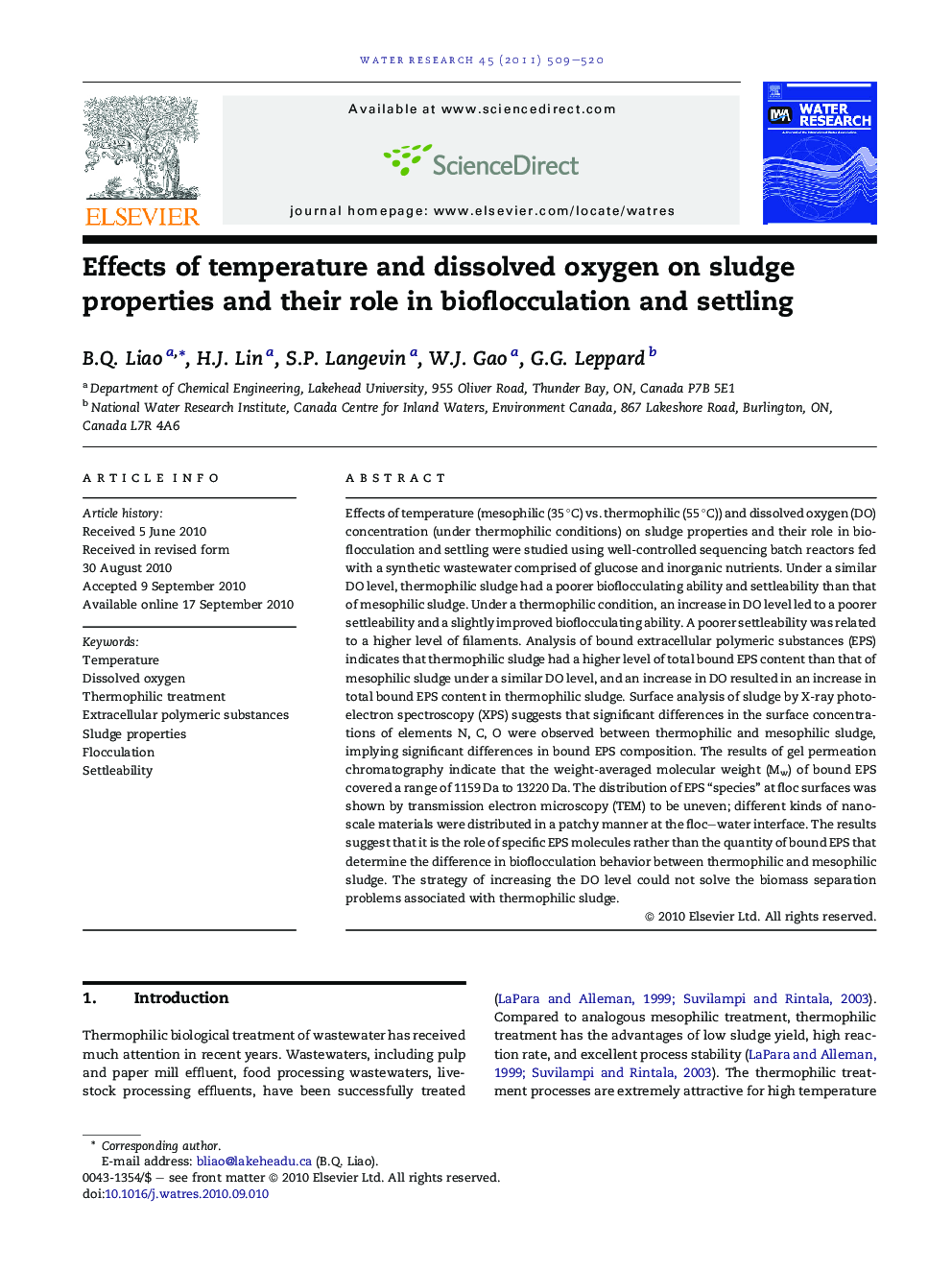| کد مقاله | کد نشریه | سال انتشار | مقاله انگلیسی | نسخه تمام متن |
|---|---|---|---|---|
| 6367931 | 1316896 | 2011 | 12 صفحه PDF | دانلود رایگان |
عنوان انگلیسی مقاله ISI
Effects of temperature and dissolved oxygen on sludge properties and their role in bioflocculation and settling
دانلود مقاله + سفارش ترجمه
دانلود مقاله ISI انگلیسی
رایگان برای ایرانیان
کلمات کلیدی
موضوعات مرتبط
مهندسی و علوم پایه
علوم زمین و سیارات
فرآیندهای سطح زمین
پیش نمایش صفحه اول مقاله

چکیده انگلیسی
Effects of temperature (mesophilic (35 °C) vs. thermophilic (55 °C)) and dissolved oxygen (DO) concentration (under thermophilic conditions) on sludge properties and their role in bioflocculation and settling were studied using well-controlled sequencing batch reactors fed with a synthetic wastewater comprised of glucose and inorganic nutrients. Under a similar DO level, thermophilic sludge had a poorer bioflocculating ability and settleability than that of mesophilic sludge. Under a thermophilic condition, an increase in DO level led to a poorer settleability and a slightly improved bioflocculating ability. A poorer settleability was related to a higher level of filaments. Analysis of bound extracellular polymeric substances (EPS) indicates that thermophilic sludge had a higher level of total bound EPS content than that of mesophilic sludge under a similar DO level, and an increase in DO resulted in an increase in total bound EPS content in thermophilic sludge. Surface analysis of sludge by X-ray photoelectron spectroscopy (XPS) suggests that significant differences in the surface concentrations of elements N, C, O were observed between thermophilic and mesophilic sludge, implying significant differences in bound EPS composition. The results of gel permeation chromatography indicate that the weight-averaged molecular weight (Mw) of bound EPS covered a range of 1159 Da to 13220 Da. The distribution of EPS “species” at floc surfaces was shown by transmission electron microscopy (TEM) to be uneven; different kinds of nanoscale materials were distributed in a patchy manner at the floc-water interface. The results suggest that it is the role of specific EPS molecules rather than the quantity of bound EPS that determine the difference in bioflocculation behavior between thermophilic and mesophilic sludge. The strategy of increasing the DO level could not solve the biomass separation problems associated with thermophilic sludge.
ناشر
Database: Elsevier - ScienceDirect (ساینس دایرکت)
Journal: Water Research - Volume 45, Issue 2, January 2011, Pages 509-520
Journal: Water Research - Volume 45, Issue 2, January 2011, Pages 509-520
نویسندگان
B.Q. Liao, H.J. Lin, S.P. Langevin, W.J. Gao, G.G. Leppard,